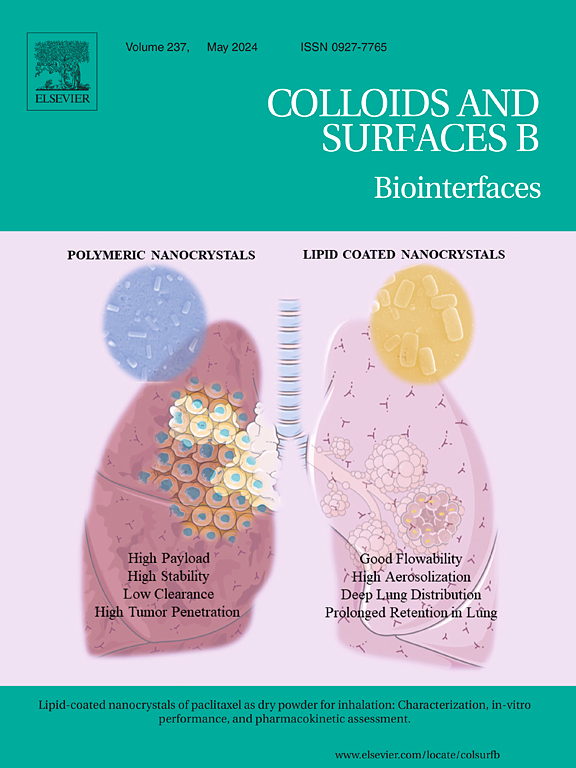Enhanced skin adhesion of transdermal drug delivery system via a semi-IPN strategy: in vitro/in vivo evaluation and drug release mechanism
IF 5.4
2区 医学
Q1 BIOPHYSICS
引用次数: 0
Abstract
Pressure-sensitive adhesives (PSAs) used for transdermal patches often present mechanical issues that lead to cold flow phenomena, patch shifting, and disrupt dose precision while creating an unwanted "dark ring" effect. Semi-interpenetrating network (semi-IPN) PSAs were synthesized in this study, which enhanced cohesion and reduced cold flow by integrating a cross-linked network into a linear polymer matrix to enhance structural integrity. Meanwhile, rivastigmine, etodolac, ketoprofen, propranolol, pirfenidone, and zolmitriptan were used to evaluate drug release rates from the semi-IPN PSA. The skin adhesion properties of the semi-IPN PSA were outstanding. Its cohesion was significantly higher than two commercially available PSAs: over 1000-fold greater than DURO-TAK® 87–2287 and 75.9 times greater than DURO-TAK® 87–4098. Drug release rates were comparable between traditional and semi-IPN PSAs. The release rates of different drugs were negatively correlated with drug polarizability, suggesting dipole-dipole interactions as the key mechanism. In summary, the semi-IPN strategy offers a robust solution for high-performance transdermal patches by improving adhesion without compromising drug release.
求助全文
约1分钟内获得全文
求助全文
来源期刊

Colloids and Surfaces B: Biointerfaces
生物-材料科学:生物材料
CiteScore
11.10
自引率
3.40%
发文量
730
审稿时长
42 days
期刊介绍:
Colloids and Surfaces B: Biointerfaces is an international journal devoted to fundamental and applied research on colloid and interfacial phenomena in relation to systems of biological origin, having particular relevance to the medical, pharmaceutical, biotechnological, food and cosmetic fields.
Submissions that: (1) deal solely with biological phenomena and do not describe the physico-chemical or colloid-chemical background and/or mechanism of the phenomena, and (2) deal solely with colloid/interfacial phenomena and do not have appropriate biological content or relevance, are outside the scope of the journal and will not be considered for publication.
The journal publishes regular research papers, reviews, short communications and invited perspective articles, called BioInterface Perspectives. The BioInterface Perspective provide researchers the opportunity to review their own work, as well as provide insight into the work of others that inspired and influenced the author. Regular articles should have a maximum total length of 6,000 words. In addition, a (combined) maximum of 8 normal-sized figures and/or tables is allowed (so for instance 3 tables and 5 figures). For multiple-panel figures each set of two panels equates to one figure. Short communications should not exceed half of the above. It is required to give on the article cover page a short statistical summary of the article listing the total number of words and tables/figures.
 求助内容:
求助内容: 应助结果提醒方式:
应助结果提醒方式:


